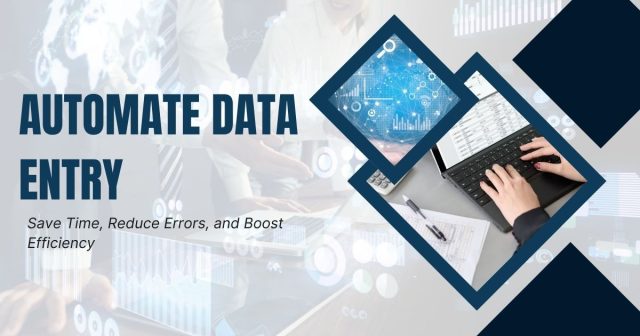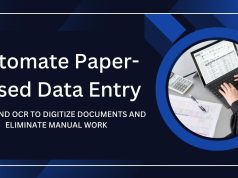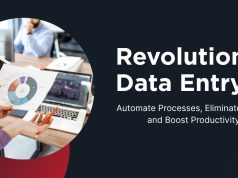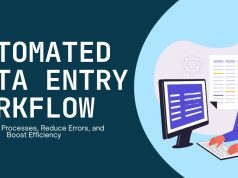Manual data entry remains one of the most time-consuming tasks in modern business operations. Whether you’re transferring customer information between platforms, updating inventory records, or managing lead databases, the repetitive nature of web-based data entry can drain productivity and introduce costly human errors.
The good news? Technology has evolved to offer sophisticated automation solutions that can handle these tasks with remarkable accuracy and speed. This comprehensive guide will walk you through the most effective methods to automate your web-based data entry processes, helping you reclaim valuable time while improving data accuracy.
By the end of this post, you’ll understand various automation tools available, know how to choose the right solution for your needs, and have a clear roadmap for implementing automated data entry in your organization.
Understanding Web-Based Data Entry Automation
Web-based data entry automation refers to using software tools and technologies to automatically input, transfer, or manipulate data across web applications without manual intervention. This process can range from simple form-filling to complex data synchronization between multiple platforms.
Automation eliminates the need for employees to manually copy and paste information, reducing the risk of typos, missed entries, and inconsistent formatting. Modern automation tools can recognize web elements, extract data from various sources, and input information with precision that often exceeds human accuracy.
The scope of automation extends beyond basic data input. Advanced systems can validate information, apply business rules, handle exceptions, and even make decisions based on predefined criteria.
Common Web-Based Data Entry Challenges
Before exploring automation solutions, it’s essential to understand the typical pain points that drive organizations toward automated approaches.
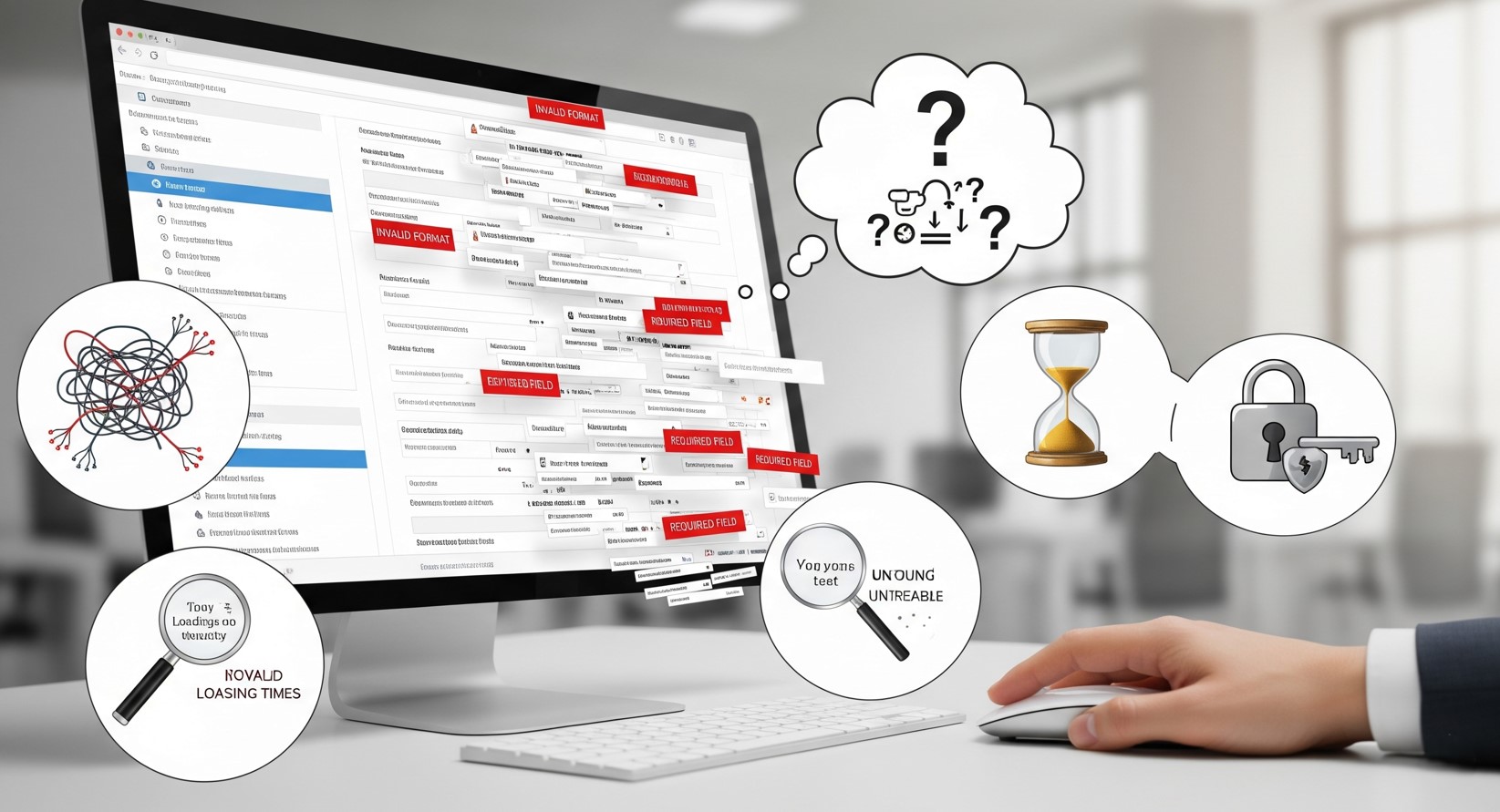
Time Consumption and Resource Allocation
Manual data entry can consume 30-40% of an employee’s workday, particularly in industries like healthcare, finance, and e-commerce. This significant time investment often prevents staff from focusing on higher-value activities that require human judgment and creativity.
Human Error and Data Quality Issues
Research indicates that human error rates in manual data entry can reach 1-4%, depending on the complexity of the task. These errors compound over time, leading to corrupted databases, incorrect reporting, and poor business decisions based on flawed information.
Scalability Limitations
As businesses grow, data entry requirements typically increase exponentially. Hiring additional staff to handle growing volumes becomes expensive and difficult to manage, especially during peak periods or seasonal fluctuations.
Repetitive Strain and Employee Satisfaction
Repetitive data entry tasks can lead to physical strain and job dissatisfaction. Employees often find these tasks monotonous, which can impact overall workplace morale and increase turnover rates.
Popular Automation Tools and Technologies
The market offers numerous solutions for automating web-based data entry, each with distinct capabilities and use cases.

Robotic Process Automation (RPA) Platforms
RPA tools like UiPath, Automation Anywhere, and Blue Prism excel at mimicking human interactions with web applications. These platforms can navigate websites, fill forms, extract data from tables, and perform complex workflows across multiple systems.
RPA solutions work particularly well for rule-based processes where the steps remain consistent. They can handle login procedures, navigate through multiple web pages, and input data according to predefined templates.
Web Scraping and API Integration Tools
Tools such as Scrapy, Beautiful Soup, and Selenium enable automated data extraction from websites and subsequent entry into target systems. When combined with API connections, these solutions can create seamless data pipelines between different platforms.
API integration represents the most efficient approach when both source and destination systems support programmatic access. This method ensures real-time data synchronization and reduces the risk of data inconsistencies.
Browser Automation Extensions
Browser-based solutions like iMacros, Greasemonkey, and custom JavaScript bookmarklets offer lightweight automation for specific web-based tasks. These tools integrate directly with browsers and can automate repetitive actions within familiar web interfaces.
While less powerful than dedicated RPA platforms, browser extensions provide an accessible entry point for organizations beginning their automation journey.
Cloud-Based Integration Platforms
Services like Zapier, Microsoft Power Automate, and Integromat connect various web applications and automate data transfer between them. These platforms excel at creating workflows that trigger based on specific events or conditions.
Cloud-based solutions require minimal technical expertise and can be configured by business users rather than IT professionals. They work exceptionally well for standard applications with pre-built connectors.
Implementation Strategies and Best Practices
Successful data entry automation requires careful planning and execution. Following proven strategies can significantly improve your chances of achieving desired outcomes.

Process Analysis and Documentation
Begin by thoroughly documenting your current data entry processes. Map out each step, identify data sources and destinations, and note any business rules or validation requirements. This documentation serves as the foundation for automation design.
Consider conducting time-and-motion studies to quantify the current effort required and establish baseline metrics for measuring improvement. Understanding process variations and exception handling requirements helps design more robust automation solutions.
Pilot Project Selection
Choose your first automation project carefully. Ideal candidates involve high-volume, rule-based processes with minimal variations. Simple form submissions, data transfers between familiar systems, or routine report generation make excellent starting points.
Avoid complex processes with numerous exceptions or those requiring significant human judgment for your initial projects. Success with simpler automation builds confidence and expertise for tackling more challenging tasks later.
Security and Compliance Considerations
Automated systems must maintain the same security standards as manual processes. Implement secure credential management, audit logging, and access controls to protect sensitive information during automated data handling.
Consider regulatory requirements that may apply to your data processing activities. Industries like healthcare, finance, and legal services often have specific compliance obligations that automation systems must respect.
Testing and Quality Assurance
Develop comprehensive testing procedures to validate automation accuracy and reliability. Create test datasets that include edge cases, unusual data formats, and error conditions to ensure your automation handles various scenarios appropriately.
Implement monitoring systems that can detect when automated processes encounter errors or produce unexpected results. Early detection allows for quick intervention and prevents problems from accumulating.
Measuring Success and ROI
Quantifying the benefits of data entry automation helps justify investment and guide future improvements.
Key Performance Indicators
Track metrics such as processing time reduction, error rate improvement, and cost savings per transaction. Compare these measurements against baseline performance to demonstrate tangible benefits.
Monitor employee satisfaction and engagement levels, particularly for staff who previously handled manual data entry. Improved job satisfaction often correlates with reduced turnover and increased productivity in other areas.
Long-term Benefits Assessment
Beyond immediate efficiency gains, consider broader organizational benefits such as improved data quality, faster decision-making, and enhanced customer service capabilities. These indirect benefits often exceed the direct cost savings from reduced manual labor.
Evaluate your organization’s ability to scale operations without proportionally increasing staffing levels. This scalability advantage becomes particularly valuable during growth phases or market expansion.
Getting Started with Your Automation Journey
Implementing data entry automation doesn’t require massive upfront investment or extensive technical expertise. Start with these practical steps to begin your automation journey.
Identify one high-impact, low-complexity process that consumes significant time each week. Document the current process thoroughly and research available tools that could handle this specific workflow. Many modern automation platforms offer free trials or freemium tiers that allow experimentation without financial commitment.
Consider partnering with automation specialists or consultants for your first project if internal expertise is limited. This investment in knowledge transfer can accelerate implementation and improve long-term success rates.
Focus on building internal capabilities gradually rather than attempting to automate everything simultaneously. Each successful project provides valuable learning experiences and builds organizational confidence in automation technologies.
The future of business operations increasingly relies on intelligent automation to handle routine tasks while humans focus on strategic activities that require creativity, empathy, and complex problem-solving. Organizations that embrace data entry automation now position themselves for competitive advantages in efficiency, accuracy, and scalability.


